
Four years ago, VMware and Amazon Web Services announced a partnership in which VMware customers would be able to run their virtualized data center environments on AWS instances. That includes everything from vSphere cloud virtualization platform, vSAN software-defined storage and NSX software-defined networking (SDN) on AWS Nitro EC2 bare-metal instances. The partnership has also included deeper integration with AWS in a number of areas, such as security and automated scaling and load balancing as well as high-bandwidth, low-latency access to AWS services, with engineers from VMware and AWS working closely together.
The alliance creating the VMware Cloud on AWS hybrid service was a boost for both companies. VMware, a pioneer in datacenter virtualization, was in the process of evolving into a player in the hybrid cloud space. Its virtualization products of compute, networking and storage components had made it a significant presence in enterprise datacenters, but the IT industry was changing, shifting quickly to the cloud and to containers – rather than virtual machines (VMs) – for easily moving applications between on-premises and cloud environments. The company has evolved its capabilities, building off of vSphere with VMware Cloud Foundation and then evolving even more to create VMware Cloud for hybrid clouds.
The partnership with AWS gave the company an alliance with the largest public cloud provider in the world and offered VMware’s vast customer base an easy on-ramp into the cloud and its world of services.
VMware now counts other cloud providers, including Microsoft Azure, Google Cloud and Alibaba, as partners and is foundational to parent company Dell Technologies’ fast-developing cloud efforts. (Dell CEO Michael Dell this week confirmed that the company is exploring the idea of spinning off its 81 percent stake in VMware – a stake worth about $50 billion – though such a move wouldn’t happen until September 2021 for tax reasons.)
For AWS, working with VMware meant getting access to that enterprise customer base. AWS continues to be the dominant player in the public cloud market – according to Synergy Research Group, it owns about 32 percent the market, followed by Azure at 18 percent, Google Cloud at 8 percent and a host of other vendors, including IBM, Oracle, Alibaba and Tencent, all of which are looking to chip away at AWS’ lead.
Since coming together in 2016, VMware and AWS have continued to innovate around VMware Cloud on AWS around everything from migration services to networking, storage, analytics, artificial intelligence and machine learning. VMware is in the process of buying Datrium, which will add a lower cost alternative to its current disaster recovery-as-a-service offering, VMware Site Recovery DRaaS. Once the deal closes, VMware will fold Datrium into its cloud business. As a VMware partner, Datrium already offers a DRaaS solution in VMware Cloud on AWS.
The companies launched VMware Cloud on AWS in 2017 and in December 2019 announced the beta of VMware running on AWS’ Outposts, Amazon-developed hardware that can be placed in customers’ datacenters and enable them to run AWS services on premises and more easily access their cloud environments. In 2018, the companies announced that AWS’ Relational Database Service could run on VMware Cloud. The continued adding of solutions and services to the hybrid cloud services seems to be paying off, according to both companies. They said this week that there has been a 2.5 times increase in the number of hosts between June 2019 and June 2020 and a 3.5 times jump in the number of VMs running, and VMware Cloud on AWS is running 17 AWS regions around the world and offers more than 300 third-party solutions from technology partners. Datacenter migration continues to be the top use case for the hybrid cloud services, with others like disaster recovery, application-specific migration and datacenter extension following.
VMware and AWS this week unveiled a host of new offerings, many of which are designed to expand the customer base beyond the enterprise and into the midmarket and entice organizations running VMware Cloud on premises to make the move to the cloud service. The new i3en.metal instance is based on Intel’s 48-core “Cascade Lake” Xeon Scalable processors and brings almost a 50 percent lower cost per Gigabyte of raw storage. The instance is aimed at storage-intensive workloads that come with high-performance requirements, such as large relational databases, NoSQL databases and distributed file systems, and includes 45 tebibytes of NVM-Express SSD capacity for applications that need high random I/O to large amounts of data. There also is native encryption at the NIC level for east-west traffic within SDDCs.
“It’s ideal for your datacenter migration as you look move workloads from storage-optimized servers on-prem into VMware on AWS,” David Brown, vice president of EC2 at AWS, said during a press briefing. “The disaster recovery transformation projects using VMware Cloud for a disaster recovery solution. We have been able to channel usage on EC2 but we worked very closely with VMware to make sure those instances are specifically tuned for the workflow that they need for these very high storage throughput and capacity workloads.”
The vendors also are offering two-host production clusters, which gives customers a smaller minimum environment for production workloads and drives down the cost by 33 percent compared with the current three-host option, lowering the bar for smaller enterprises to adopt the service. VMware Cloud on AWS also now supports VMware’s Tanzu Kubernetes Grid, a service integrated with vSphere that enables enterprises to deploy, scale and manage containerized applications on the hybrid cloud service. Tanzu was born last year out of VMware’ “Project Pacific” to deliver Kubernetes capabilities to vSphere.
“This gives our customers the ability to have a single environment where they can deploy, manage and run both VMs as well as containers and Kubernetes clusters and because it’s enabled on top of VMC and AWS, it also inherits all the elasticity of the AWS public cloud for containerized workloads and also gives them a consistent operating environment for hybrid cloud environments where they might be running those same services on top of vSphere environments on-prem.”
There also was a look at VMware Transit Connect, a networking tool currently in preview that is based on AWS’ Transit Gateway service that will bring automated controls for provisioning, deploying and managing connectivity between VMware Cloud on AWS SDDCs, Amazon Virtual Private Clouds and on-premises environments. It also will deliver improved network connectivity for VMware SD-WAN users at branch offices or remote working sites who want to access workloads deployed on VMware Cloud on AWS.

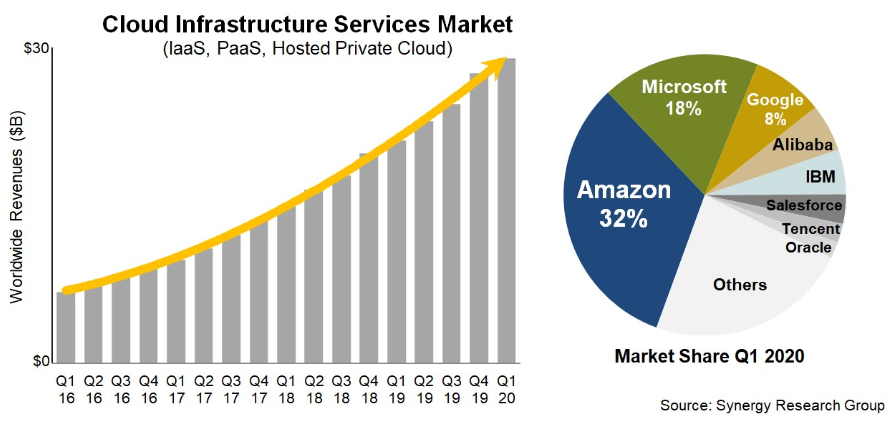
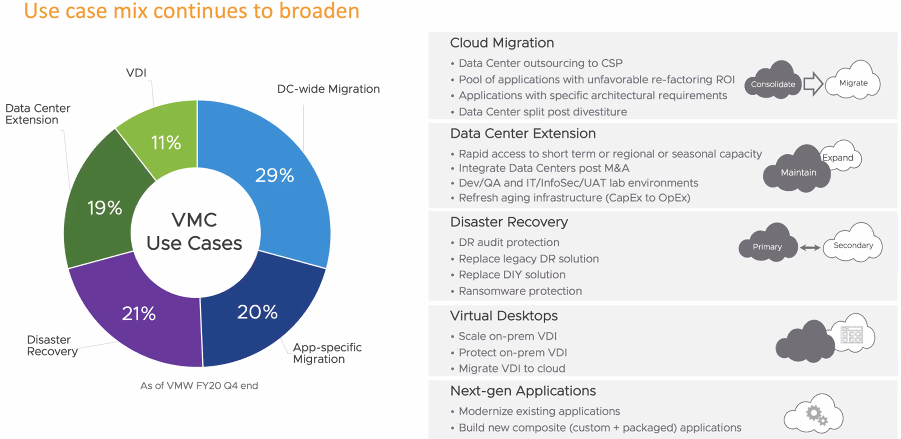
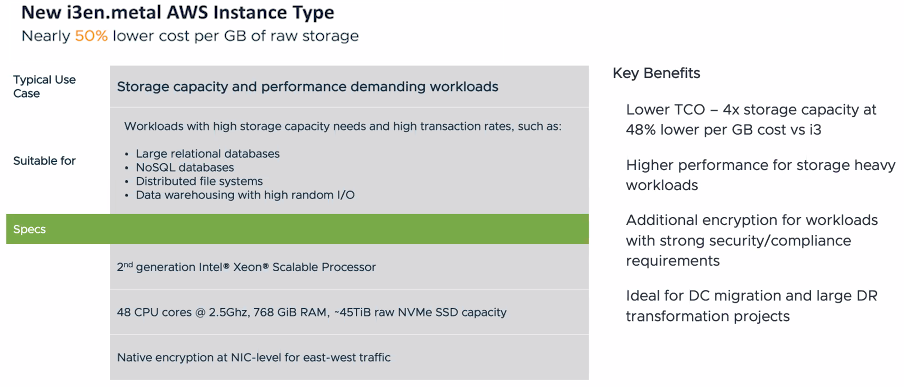
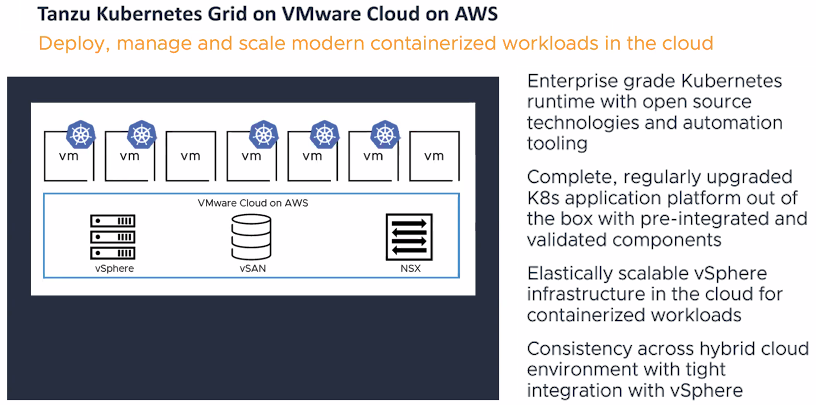


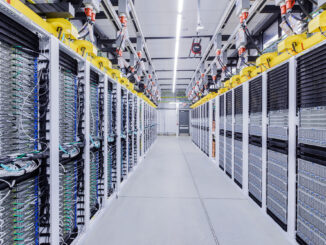

I have seen this movie many times during MSFT’s monopoly days. It does not end well.
In this sequel the Heroes (the customers) end up beaten and broke and the Villains (AWS/VMware) ride of in the sunset with BILLION$